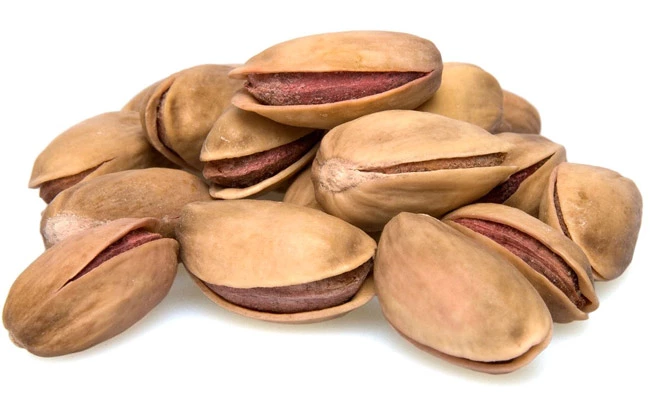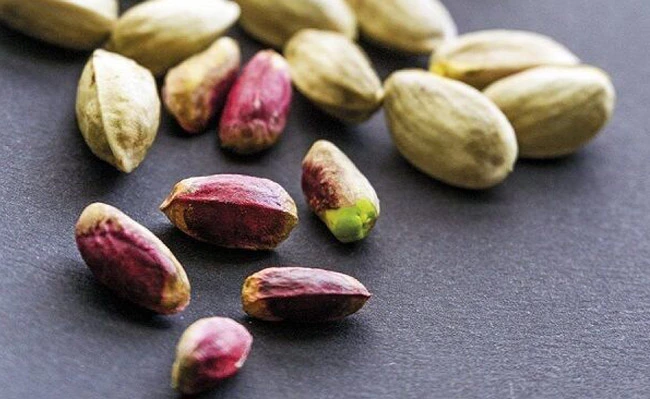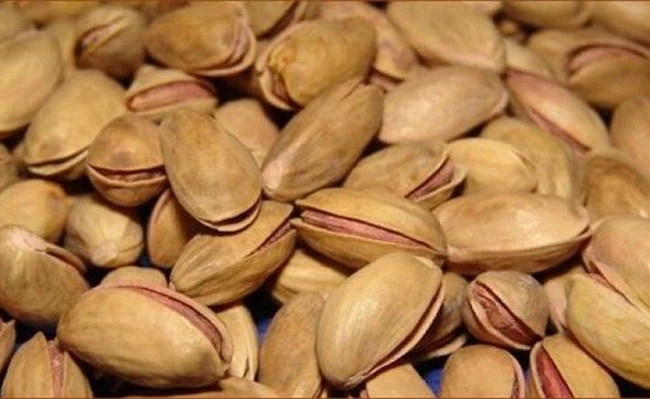Turkey is the third-largest pistachio-producing country after the United States and Iran. It produces 127,400 metric tons of pistachio every year. Most Turkish pistachio trees grow in Anatolia because it has a suitable climate. But there are pistachio groves in different parts of the country in the Mediterranean and Aegean coastal lines. They provide healthy pistachio ingredients for Turkish baklava.
This article provides an overview of pistachio production in Turkey. It highlights the major Turkish pistachio regions and high-yielding varieties. We also talk about the world-famous Turkish baklava.
- Turkish Pistachio Production
- Fluctuations in Turkish Pistachio Production
- Major Pistachio Production Regions in Turkey
- Varieties of Turkish Pistachios
- Turkish Pistachios Taste and Shape
- Turkish vs American vs Iranian Pistachios
- Factors Determining the Quality of Turkish Pistachio
- Turkish Pistachio Kernels
- Uses of Pistachios in The Turkish Market
Turkish Pistachio Production
In 2020, Turkey exported 10,875 tons of pistachio to different countries. These included the United States, China, Britain, and the European Union. Germany was the primary importer of Turkish pistachios. Pistachio exports to Germany increased by 63% compared to 2019, up to 2,064 tons.
Fluctuations in Turkish Pistachio Production
Turkish pistachio production has not always been the same due to climate change. For example, in 2017, pistachio production in Turkey decreased by 50 percent compared to the previous year. This was because of the increase in rainfall in spring. But pistachio production areas and the number of bearing trees increased by about 25 percent. These changes are expected to impact Turkish pistachio production in the coming years.
Major Pistachio Production Regions in Turkey
Around 56 provinces in Turkey produce pistachios. But only five popular provinces are the leading Turkish pistachio suppliers. These include Gaziantep, Sanliurfa, Adiyaman, Kahramanmaras, and Siirt.
Gaziantep (Antep) is the capital city of Gaziantep province in the southeastern part of Turkey. The city is well-known for its pistachio and is one of the best Turkish pistachio suppliers. In 2018, the number of pistachio trees in Gaziantep was more than 22 million. There are around 18 million crop trees and 4 million young and new trees.
Sanliurfa is the second-major producer of Turkish pistachios. Together with Gaziantep, they are responsible for more than half of the pistachio produced in the country.
Varieties of Turkish Pistachios
- Kirmizi. The most cultivated cultivar in Turkey is ‘Kirmizi’. The word ‘Kirmizi’ means ‘red’ in Turkish, which refers to the color of the kernel.
- Uzun. The second most cultivated variety in Turkey is Uzun, with a sharp green kernel.
Abiad Miwahi. This variety produces high-quality pistachio nuts with white color and average size.
Turkish Pistachios Taste and Shape
Turkish pistachios are slim, small nuts that grow in brown shells. They have a unique flavor from the great climate of the Mediterranean. In general, Turkey produces two types of pistachio nuts:

Antep (Kirmizi and Uzun) pistachios: the small, slim pistachios in brown shells from Gaziantep. They are consumed both as a snack and are a major component in baklava and other sweets.

Siirt pistachios are round, fatter nuts with pale beige shells (from Siirt in eastern Turkey).
Turkish pistachios don’t have that much demand in the international markets due to lower split rates and kernel yields, (Figure 1). But, price correction can help Turkish pistachios to be accepted in the markets, especially in ingredient markets.

Turkish vs American vs Iranian Pistachios
Turkish pistachios are smaller than American or Iranian pistachios. But their flavor is more concentrated and nutty. Turkish pistachios have a dark shell color. So, if you like large, buttery nut meats, go with American or Iranian pistachios.
It should be mentioned that American pistachios have their roots in Iranian pistachios. But, Turkish pistachios are of a different variety.
Factors Determining the Quality of Turkish Pistachio
The quality of Turkish pistachio is directly related to its size. The quality drops as the size decreases. For example, 90 or fewer nuts in 100 grams of pistachio are regarded as high-quality. But 90 to 100 nuts per 100 grams of pistachios are considered second-quality.
Based on this description, Siirt pistachios are seen as the first-quality because there are 75 nuts in 100 grams. Ohadi, Halebi, and Kirmizi are also high-quality, and Uzun, with 96 nuts in 100 grams, is considered second-quality.
Turkish Pistachio Kernels
Mawardi kernels are among the most popular pistachios in the Turkish market that come in the roasted or salted form. However, Turkish pistachios are different from others because of the shell color, which is darker than other pistachios.
Turkish pistachio growers draw their pistachios with hulls to preserve the quality while prolonging the shelf life. If pistachios were hulled right after harvesting, the shell color wouldn’t be dark, and it would have a better look.
However, to improve the export of pistachios in the following years, they plan to hull the pistachios before they are dried to look fresher.

Uses of Pistachios in The Turkish Market
Turkish Pistachio Baklava
Baklava is a well-known dessert in Turkey that dates back to the Ottoman Empire (Figure 3). It can be found all around Turkey. But almost 90 percent of baklava production factories are located in Gaziantep. Turkish pistachio is the main ingredient in Gaziantep baklava.
Pistachio baklava has many fans throughout the world. And Gaziantep pistachio baklava is unique in the whole country and the world. It is one of the most popular products and souvenirs in Turkey.
The difference between Gaziantep pistachio baklava and other baklavas in Turkey is in their fillings. Other types of baklava use Cinnamon and rosewater as the main ingredients. But chefs in Gaziantep prefer to use crushed pistachio, butter, and sugar syrup instead.

Turkish pistachio shells as renewable energy
Gaziantep metropolitan municipality and a French environmental engineering firm found a use for Turkish pistachio shells. The idea is to use pistachio shells as a renewable energy source in the province. So, they decided to use large amounts of pistachio shell leftovers for heating and cooling systems in the area. The Gaziantep municipality wants to make this city the first eco-city in Turkey. However, this process may take longer than the theory.
Conclusion
To sum up, Turkey is one of the leading pistachio producers. Kirmizi and Uzun are the most cultivated cultivars in Turkey’s Gaziantep, producing the lion’s pistachio share. In Turkey, most of the pistachio crop is consumed domestically. Pistachio is mainly consumed as a snack (50%) or in confectionery, such as baklava or chocolate products. As for exports, 90% are kernel pistachios and 10% pistachio in-shell.
FAQ


we are importer of pistachio price all type and in 20 feet how much box will come.